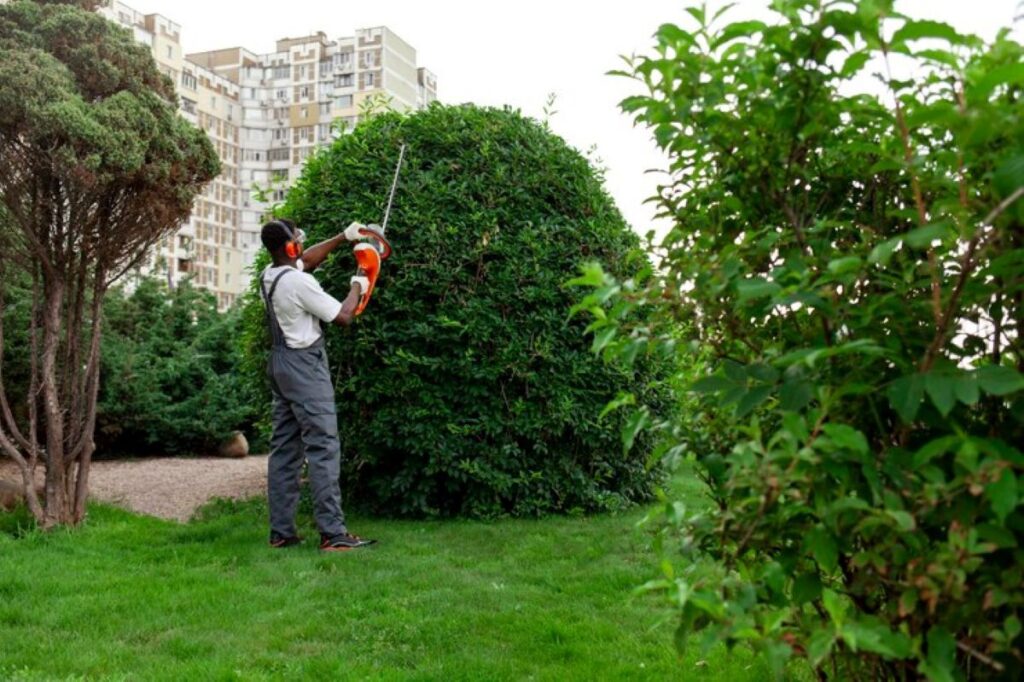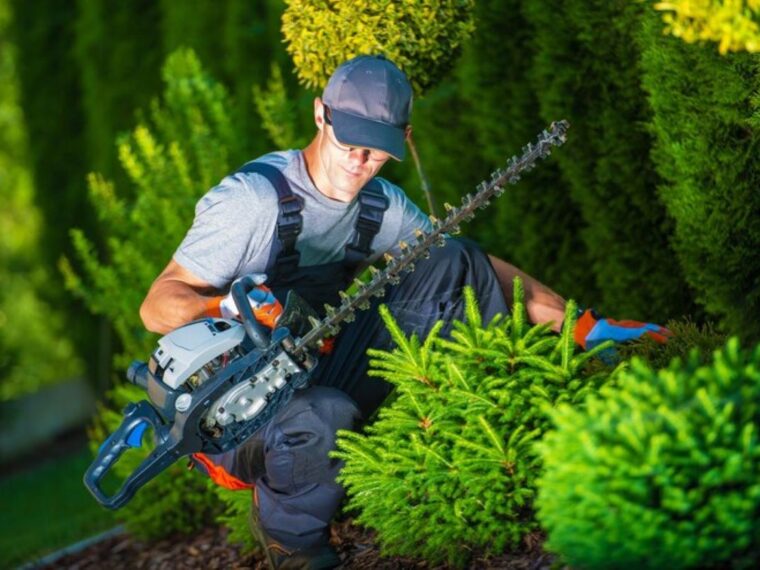Trimming hedges is an essential aspect of garden maintenance that can significantly enhance the aesthetic appeal of your outdoor space. However, it is crucial to approach this task with care to ensure safety and achieve the desired results. This article will provide expert tips and tricks on how to safely trim hedges, ensuring that both you and your garden remain in good shape.
Understanding the Importance of Hedge Trimming
Hedge trimming is not merely a cosmetic endeavour; it plays a vital role in the health and longevity of the plants. Regular trimming encourages new growth, helps maintain the desired shape, and prevents overgrowth that can lead to disease.
Promoting Healthy Growth
By trimming hedges, you can stimulate new growth and improve air circulation within the plant. This is particularly important for dense hedges, as poor air circulation can lead to fungal diseases. Regularly trimming your hedges will ensure they remain healthy and vibrant. Additionally, pruning at the right time of year can make a significant difference; for many species, late winter or early spring is ideal, as it allows the plant to focus its energy on producing new leaves and flowers as the growing season begins. The careful removal of dead or diseased branches also helps to prevent the spread of pests and diseases, creating a more robust and resilient hedge.
Enhancing Aesthetic Appeal
A well-maintained hedge can serve as a beautiful backdrop for your garden or even as a natural privacy screen. Trimming helps to maintain a neat and tidy appearance, which can significantly enhance the overall look of your outdoor space. Furthermore, the choice of hedge shape and size can dramatically alter the character of your garden; for instance, formal hedges can lend an air of sophistication, while more relaxed, informal shapes can create a charming, cottage-like feel. Incorporating flowering hedges can add seasonal interest, providing bursts of colour and attracting pollinators, thereby enriching the biodiversity of your garden.
Preventing Overgrowth
Overgrown hedges can become a nuisance, encroaching on pathways and obstructing views. Regular trimming helps to keep hedges in check, ensuring they do not become an overwhelming presence in your garden. Moreover, unchecked growth can lead to a host of problems, including increased susceptibility to wind damage and the potential for branches to interfere with nearby structures or utilities. By maintaining a regular trimming schedule, you not only preserve the functionality of your garden space but also contribute to the overall safety and accessibility of your outdoor environment. This proactive approach can save time and effort in the long run, as it prevents the need for drastic measures to reclaim your garden from unruly hedges.
Essential Tools for Hedge Trimming
Having the right tools is crucial for effective and safe hedge trimming. The following tools are recommended for achieving the best results:
Hand Shears
Hand shears are ideal for small hedges and precise trimming. They allow for greater control and are perfect for shaping and detailing. When using hand shears, ensure they are sharp and well-maintained for optimal performance. It is also beneficial to choose shears that are ergonomically designed, as this can reduce fatigue during extended use. Look for models with cushioned grips and lightweight materials to enhance comfort, especially if you have a large area to trim.
Hedge Trimmers
For larger hedges, electric or petrol-powered hedge trimmers can save time and effort. These tools are designed for efficiency, allowing you to tackle larger areas with ease. However, it is essential to follow safety guidelines when using powered tools. Before starting, familiarise yourself with the specific model’s features and safety mechanisms. Additionally, consider the length of the blade; longer blades can cover more ground but may be harder to manoeuvre in tight spaces. Regular maintenance, such as cleaning the blades and checking for wear, will ensure your trimmer operates at peak performance.
Safety Gear
Regardless of the tools used, safety gear is paramount. Always wear gloves to protect your hands from cuts and scrapes. Safety goggles are also recommended to shield your eyes from debris. Additionally, wearing sturdy footwear can help prevent injuries. It’s wise to consider ear protection as well, particularly when using petrol-powered trimmers, as they can produce significant noise levels that may lead to hearing damage over time. Furthermore, a dust mask can be beneficial if you are trimming hedges that produce a lot of pollen or dust, ensuring that your respiratory health is safeguarded during the trimming process.

Safety Precautions Before You Begin
Before embarking on your hedge trimming project, it is essential to take certain safety precautions to ensure a safe working environment.
Assessing the Area
Before starting, take a moment to assess the area around the hedge. Look for any obstacles such as power lines, fences, or garden furniture that could pose a risk during trimming. Ensuring a clear workspace will help prevent accidents.
Checking Weather Conditions
Weather can significantly impact the safety of outdoor tasks. Avoid trimming hedges during wet or windy conditions, as slippery surfaces and strong gusts can increase the risk of accidents. Ideally, choose a calm, dry day for your trimming activities.
Inspecting Tools
Before use, inspect all tools for damage or wear. Dull blades can make the job more difficult and increase the risk of injury. Ensure that all tools are in good working order, and sharpen blades as necessary.
Techniques for Effective Hedge Trimming
Employing the right techniques can make a significant difference in the outcome of your hedge trimming efforts. Here are some expert tips to keep in mind:
Start with the Top
When trimming hedges, it is advisable to start with the top. This allows you to create a uniform shape and ensures that any clippings fall to the ground, making cleanup easier. Use a ladder if necessary, but ensure it is stable and positioned on level ground.
Maintain a Consistent Shape
To achieve a professional-looking hedge, maintain a consistent shape throughout the trimming process. Use a string line or a level to guide your cuts, ensuring that the hedge remains even. Regularly step back to assess your work from different angles.
Trim in Sections
Rather than attempting to trim the entire hedge in one go, break the task into manageable sections. This approach allows for greater control and precision, reducing the risk of mistakes. It also makes it easier to monitor progress and make adjustments as needed.
Post-Trimming Care
After trimming, it is essential to care for your hedges to promote healthy regrowth and maintain their appearance.
Cleaning Up Debris
Once the trimming is complete, clean up any fallen branches and clippings. Leaving debris can create a messy appearance and may attract pests. Consider composting the clippings or using them as mulch to enrich the soil.
Watering and Fertilising
After trimming, hedges may benefit from a good watering to help them recover. Additionally, applying a balanced fertiliser can provide the necessary nutrients to promote healthy growth. Be sure to follow the manufacturer’s instructions for application rates.
Monitoring for Pests and Diseases
After trimming, keep an eye on your hedges for any signs of pests or diseases. Early detection can prevent more significant problems down the line. If any issues arise, consult a gardening expert for advice on treatment options.
Common Mistakes to Avoid
Even experienced gardeners can make mistakes when trimming hedges. Being aware of common pitfalls can help ensure a successful trimming experience.
Over-Trimming
One of the most common mistakes is over-trimming. While it may be tempting to achieve a perfectly manicured look, removing too much foliage can stress the plant and hinder its growth. Aim to trim only a third of the total height or width at any one time.
Ignoring Plant Type
Different hedge species have varying growth habits and requirements. Ignoring the specific needs of your hedge can lead to poor results. Research the type of hedge you are trimming to understand its growth patterns and trimming requirements.
Neglecting Seasonal Timing
Timing is crucial when it comes to hedge trimming. Trimming at the wrong time of year can affect flowering and growth. Generally, late winter or early spring is the best time for most hedges, but always check the specific needs of your plants.

Conclusion
Trimming hedges can be a rewarding task that enhances the beauty and health of your garden. By following these expert tips and tricks, you can ensure a safe and effective trimming experience. Remember to assess your tools, take necessary safety precautions, and care for your hedges post-trimming. With the right approach, your hedges will thrive and continue to beautify your outdoor space for years to come.
Related : Stump Grinding Services in Northern Beaches: What to Expect

